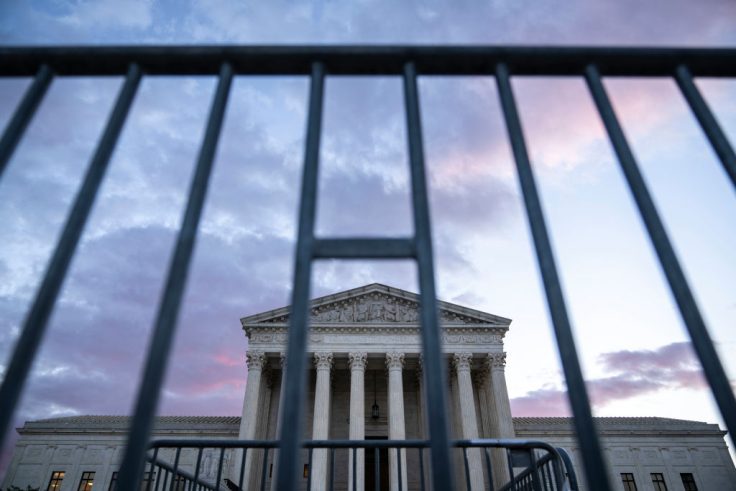The Supreme Court remains sealed to visitors over two years into the pandemic even as the justices mix it up with the public.
Only lawyers—screened first for COVID—select reporters, and essential staff are allowed in for arguments as of this writing, while opinions are released online. The High Court is one of the last entities in Washington enforcing lockdown procedures. The U.S. Capitol reopened for tours in March and the White House shed its lingering mask requirement on March 1.
The Court’s distance from the public is especially jarring because it’s in the middle of one of the most consequential terms in its history. By June, the justices could overturn Roe v. Wade and recognize a constitutional right to carry guns in public. Those historic decisions could drop on a webpage while the justices start their annual summer break, beyond the public eye.
"I want dissents read from the bench. I want majority opinions read from the bench. This would be a huge missed opportunity for the press and for posterity," said Gabe Roth, executive director of the oversight group Fix the Court. "I’m concerned that these types of exercises are ones that the chief justice would rather completely scrap or keep to a website to mete out."
The Supreme Court’s public information office did not respond to requests for comment.
Members of the Court—all of whom are vaccinated and boosted—are traveling about the country freely, even as they bar the public from their courtroom. Justice Stephen Breyer appeared at the University of Virginia School of Law on April 12 to accept a medal from the university and participate in a forum.
Justice Amy Coney Barrett jetted to the Ronald Reagan Presidential Library in California for an April 4 speaking engagement in front of a sold-out crowd. Barrett acknowledged that the country was returning to the pre-COVID norm during her appearance, and she said she hopes the Court will soon be free of "pandemic law" cases—like vaccine mandates or worship restrictions—which have dogged the Court since 2020.
Even Justice Sonia Sotomayor is reverting to normal form. Sotomayor has been especially cautious about COVID because she has diabetes, which puts patients at higher risk of complications. She was the only justice to wear a mask when the Court returned to in-person oral arguments in October 2021. And she was reportedly involved in a spat—which the Court denied—with Justice Neil Gorsuch over masking inside the building during the omicron surge.
The justice’s wariness has apparently dissipated. Sotomayor appeared before a crowd of 3,000 on April 5 at Washington University in St. Louis. She donned a mask when taking the stage but removed it when delivering remarks, and mingled maskless with the audience in the latter portion of her appearance.
Washington University has a vaccine mandate, but it does not require masks or the booster shot.
Some members of the Court even have plans for international travel, making their distance from the public stranger still. Justice Neil Gorsuch will teach a seminar on national security and the separation of powers to law students in Italy in July.
Opening the courtroom also benefits the litigants themselves. Parties to a case aren’t always able to obtain a seat in the courtroom in advance. Instead, they arrive in the small hours of the morning to score one of about 50 tickets for a full day’s session. Otherwise, they wait in the "three-minute line," in which onlookers can catch a few minutes of a session and then are cycled out for a new group of observers.
The three-minute line isn’t just for random tourists. Fix the Court’s Roth was at the High Court for a 2017 case involving potential wrongful arrests at a house party.
"One of the people who was at the party stopped me randomly and said, ‘I think my case is being argued today. How do I get in?’" Roth said.
